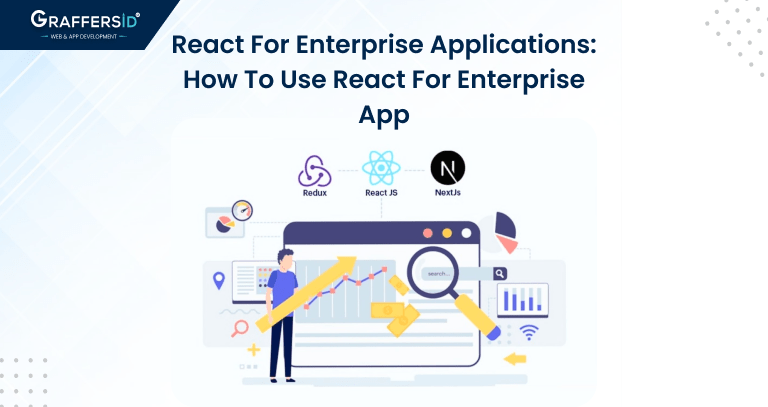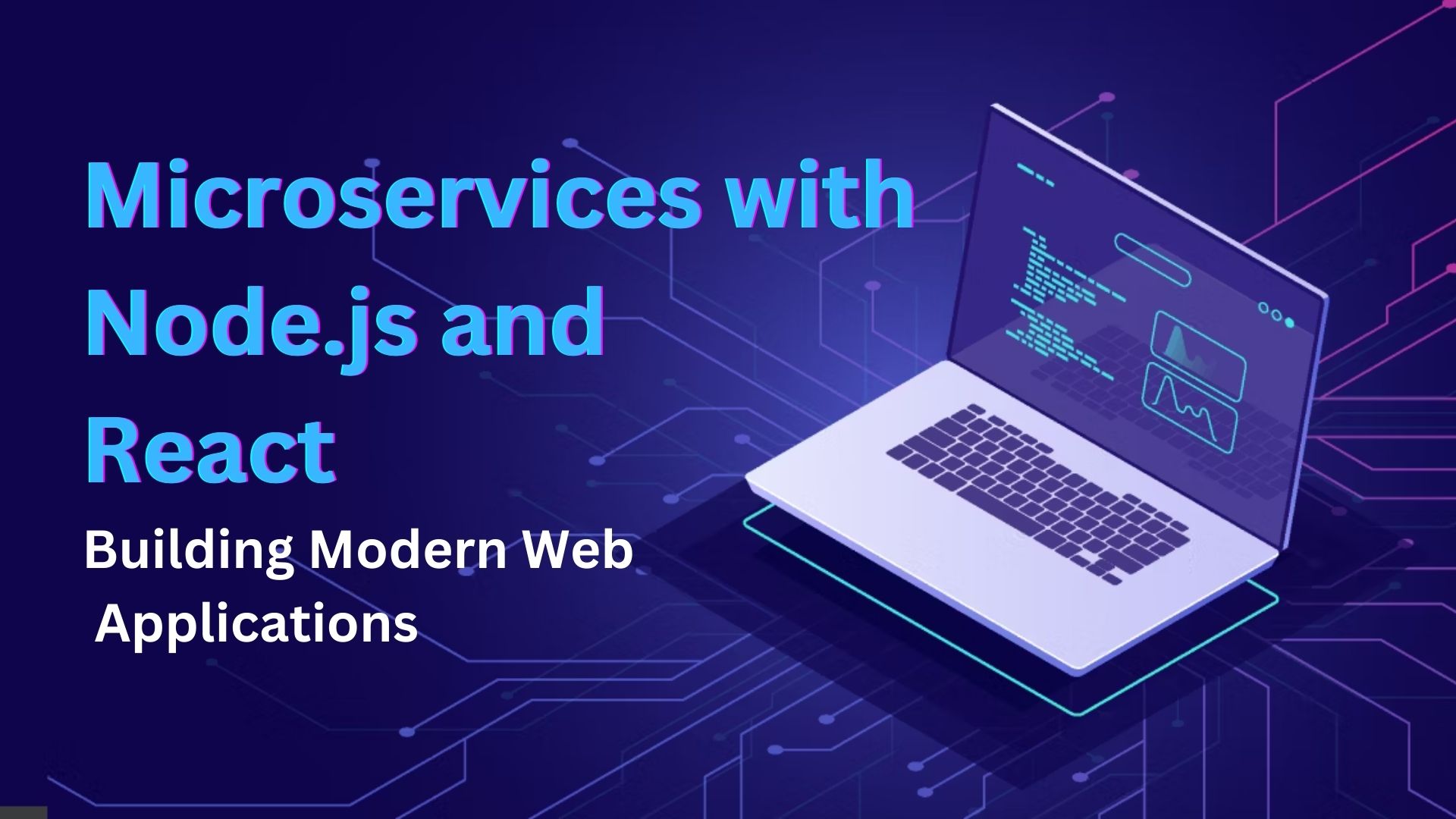React is an incredibly powerful JavaScript library for developing enterprise applications. It offers developers a range of tools and features that make it perfect for creating large, complex applications that can scale easily. With React, you can create robust user interfaces and powerful business logic, all while leveraging the latest web technologies. This comprehensive guide to using React for enterprise applications development will teach you everything you need to know about leveraging the library’s features and tools to create powerful, efficient applications. By the end of this guide, you’ll be able to confidently create, and maintain React applications for use in the enterprise.
What is React?
React is an open-source JavaScript library for creating user interfaces. It was created by Facebook in 2013 and has since become one of the most popular front-end libraries. One of the most important features of React is that it allows developers to create reusable UI components. React can be used to build both desktop and mobile UI elements, as well as web applications. It is commonly used in single-page applications (SPAs).
React is a great choice for developing enterprise applications because it allows you to create scalable and highly efficient applications. There are many reasons why enterprises choose to use React. It offers a wide range of features that make it easy to create robust and powerful applications. Additionally, React is easy to learn, has a large and active developer community, and is backed by some of the biggest companies in the technology industry.
How to Get Started with React
Enterprise apps are expensive and time-consuming to build. The best solutions work with your existing tech stack, so you can start using them as soon as possible.
React is one of the most popular approaches for building enterprise applications. You’ll need to be familiar with basic react techniques including functional programming and state management for enterprise applications.
React is a popular JavaScript library and it’s easy to get started with it. One way is to create an HTML page that has just the script tags.
You might want to review your options as your application grows. You can use JavaScript toolchains like these. Each of them works easily and does not require any setup or configuration. You can leverage the rich React ecosystem to build quality products.
Want to hire remote React.js developers? Hire Here!
Benefits of using React for Enterprise Application Development
React offers several benefits for enterprise application development. Here are the top benefits of using React for enterprise applications.
- It has a powerful one-way data flow. This allows you to create clean and readable code that is easy to maintain.
- It also allows you to create responsive and scalable user interfaces with minimal effort.
- React is also completely open-source and offers a huge selection of third-party tools and libraries.
- It also supports both web and mobile application development and has a low barrier to entry.
All of these benefits make React a great choice for enterprise application development.
Setting Up Your React Environment

The first step to using React for enterprise application development is setting up your React environment. This is the environment in which you will write and test your React applications. There are many different ways to set up a React environment, and each method has its benefits and drawbacks.
Let’s take a look at some of the most common ways to set up your React environment.
Web Browser – A browser-based React environment is one of the easiest ways to get started with React development. Browser-based React environments let you write code in your standard text editor (e.g. Sublime, Notepad, Visual Studio Code, etc.) and debug your code in the browser. While browser-based environments are easy to set up, they have some drawbacks. The main issue is that browser-based environments don’t give you access to some React features. This can make it difficult to write large and complex applications.
Node.js – Node.js is a server-side JavaScript environment that can be used as a React development environment. This is one of the most popular ways to set up a React environment. Node.js environments let you run JavaScript code outside of a browser and have access to a wide range of features and libraries.
Understanding React Components
Components are the core building blocks of your React application. They are reusable, modular UI elements that let you create more modular and scalable applications. When you use React, you create components that contain all of the code required to display a piece of UI as well as the logic needed to create and interact with that UI. This means that your component code is separate from the rest of your application code. This helps to keep your application code clean and organized.
React components are made up of three major parts: –
The “render” method:
This is where you write the code that displays your component’s UI. If you’ve used a markup language like HTML or a templating language like Handlebars, then you’ll be familiar with this part of a component. The render method is where you write the code that displays your component’s HTML.
The “state” method:
This defines how your component reacts when its “render” method is called. When someone uses your component, their browser calls the component’s render method so that the component’s UI is displayed in their browser. If the component’s UI doesn’t change, then the component’s render method doesn’t need to be called again. However, if the component’s UI needs to change, then the component’s render method is called again. This is where you define how the component’s UI reacts when it’s called again.
The “getInitialState” method
This is where you define how the component’s state is initialized. When you create a new component, it doesn’t have any data associated with it. However, if you want your component to display data, you need to give it some data. The getInitialState method is where you define how the component’s state is initialized. You define what data gets added to the component and what variables it gets assigned.
Developing Your React Application
The next step in developing your React application is to decide how to organize your code and how to implement your architecture. When creating React applications, you have two main options.
- In-Browser Code – You can write all of your code in a single browser window. This means that you have to use Code-Splitting to load your code client-side. This is the easiest way to create React applications. However, it is not the best way to create large applications. This is because your code is loaded all at once.
- Server-Side Code – You can write your code on the server side and use Code-Splitting to load your code client-side. This is the best way to create large applications. It lets you load only the code that the user needs. This makes your applications more efficient. It also lets you create a highly scalable architecture.
Testing and Debugging React Applications
Testing is a critical part of developing any application. It is important to ensure that your code is functioning properly and that it is bug-free. However, it can be challenging to test React applications. This is because React is a client-side library. This means that you can’t test your React applications in the same way that you would test a server-side application.
However, there are a few ways to test and debug React applications.
- Debugging – Debugging is the process of finding and fixing bugs in your code. There are a few ways to debug React applications. You can set breakpoints in your code so that you can step through your application’s code and see what’s happening as it runs. You can also use browser tools to inspect your application’s state. This can help you identify bugs and find places where your application’s code is misfiring.
- Testing – Testing React applications is challenging because you can only test your application in a browser. There are a few different ways to test your React applications. You can use a browser-based code editor like CodeSandbox. This will let you test your application in a browser and see how it reacts when certain features are used. You can also use an emulator to test your application. This will let you test your application on a desktop computer and see how it behaves in different browsers.
The Best React UI Components for Enterprise Applications

React UI components are one of the best options for making your enterprise application look authentic and professional. It is important to select the right components so that they provide functionalities while also looking great.
The following are just some of the React Enterprise application UI components that we think will be useful for most enterprise applications:
Material React Components:
Material is a set of React UI components, inspired by Google’s Material Design, which can be used to make web applications look awesome, without the need for any JavaScript knowledge. They provide a wide range of high-quality and beautiful components with various states and modifiers.
Ant Design (AntD):
If you’re looking for an enterprise-grade react UI component library, Ant Design might be a good choice. This library can help you to create an enjoyable and productive interface, which will provide an enjoyable experience for users.
This tool is used by a range of China-based companies to help make their products. Ant Design offers a range of user interface components that are very useful in enriching your software system and other projects.
Flatpack:
Flatpack is an open-source project that provides a set of high-quality React Components based on Bootstrap 4 –
Semantic UI:
Semantic UI is a powerful open-source framework built on top of jQuery with a toolkit of over 120 responsive HTML elements, the framework is easy to use and provides a wide range of features that can be implemented on different platforms.
Chakra UI:
There are several React UIs out there, but Chakra offers a good mix of simplicity and modularity. You can use it to quickly build powerful features that delight your users.
React Bootstrap:
React Bootstrap is a project that allows you to reuse Bootstrap components in your applications.
Why You Should Use React in Enterprise Applications Development
React is a modern front-end development framework for building user interfaces, most notably popular in social media. There are several reasons why you should use React in enterprise app development:
- React works well with the build systems and testing tools of your choice.
- The functional programming paradigm of React allows developers to create reusable components that map directly to HTML structures in your app, or UI patterns such as modals, tabs, and so on.
- There are many great libraries and tooling available for React including some from Facebook themselves!
- React isn’t just that it’s fast but that it’s also easy to use and offers great scalability.
- React helps to handle data changes on the front end.
- It has a Virtual DOM which saves time when the page has to re-render.
- React also offers unidirectional data flow which helps developers to understand how data flows through the application in one direction, enabling them to optimize any code that may run into performance issues.
Why Large Scale Businesses Choose React.js Development?
Large-scale businesses choose React.js development because the framework is lightweight, modular, and easy to learn.
In 2019 more and more large enterprises are using React.js in their applications. This is because the tool is lightweight, modular, and easy to learn.
React comes with some pretty nice features like a great developer experience and a very fast render time which makes it perfect for dynamic user interfaces on desktop computers as well as mobile devices.
In addition to that, it is also highly scalable from small components up to enterprise-level applications which makes it perfect for large-scale business operations too!
Which Big Apps Use React?
React is a JavaScript library for building user interfaces. Major companies that use React Are:
- Netflix: Netflix uses React for its TV apps and desktop site.
- Facebook: Facebook uses React in News Feed and Messenger.
- Airbnb: Airbnb uses React for various features on its website.
- Uber: Uber uses React for its app and website.
- Instagram: Instagram uses React on the web and mobile devices.
- Salesforce: Salesforce is in the process of replacing its AngularJS-based application with a React-based application
- Hootsuite: Hootsuite uses React on the website
React Enterprise Application Architecture
1.Component-Based Architecture
React’s component-based architecture is a natural fit for developing large-scale applications. By breaking the user interface into smaller, reusable components, you can manage complexity and achieve code reusability. To create an effective component structure for an enterprise application, consider the following:
- Container and Presentation Components: Differentiate between container components (smart components that manage data and application state) and presentation components (dumb components that focus on rendering and user interaction). This separation enhances the maintainability of your codebase.
- Component Hierarchy: Create a clear hierarchy for your components. High-level components should control the flow of data and act as the primary entry points to the application, while lower-level components should encapsulate smaller, reusable UI elements.
- Folder Structure: Organize your components into logical folders based on functionality. This makes it easier to locate and manage different parts of your application.
2.State Management
Managing the application’s state is a critical aspect of an enterprise-level architecture. React’s local state management may be suitable for smaller projects, but for larger applications, using a state management library like Redux or Mobx is often recommended. Key considerations include:
- Single Source of Truth: Keep the application state in a single, central store. This ensures that data is consistent across the application and simplifies debugging.
- Immutability: Enforce immutability to prevent unexpected changes to the state. Immutable data structures and practices help maintain a predictable state flow.
- Middleware: Integrate middleware for handling asynchronous actions, such as making API calls. Middleware like Redux Thunk or Redux Saga can help manage complex workflows.
3.Routing
For multi-page applications, routing is a crucial part of the architecture. React Router is a popular library for managing routes in React applications. To build a robust routing structure:
- Nested Routes: Use nested routes to create a clear hierarchy in your application. This approach allows you to manage the layout and navigation of different sections efficiently.
- Route Guards: Implement route guards to control access to certain parts of your application. For example, you can restrict access to admin panels or protected resources.
4.Server-Side Rendering (SSR)
Server-side rendering can improve performance and SEO for enterprise applications. Implementing SSR with React can be complex, but the benefits are substantial. Consider using libraries like Next.js or Razzle to simplify the process.
- SEO Optimization: Server-side rendering provides better SEO support since search engines can crawl your content effectively.
- Performance: SSR can significantly reduce initial page load times, enhancing the user experience.
5Error Handling and Logging
Enterprise applications need robust error handling and logging mechanisms to identify and address issues promptly. Implementing error boundaries in React components and integrating centralized logging services can be invaluable.
6.Code Splitting
Large applications can benefit from code splitting, which loads only the necessary code for a specific page or feature, reducing initial load times. Webpack’s dynamic import and React.lazy can help with this.
7.Testing and Continuous Integration/Continuous Deployment (CI/CD)
Implement a comprehensive testing strategy, including unit tests, integration tests, and end-to-end tests. Integrate your React enterprise application with a CI/CD pipeline to automate testing and deployment processes.
Building a React enterprise application architecture involves careful planning and adherence to best practices. By focusing on component-based design, state management, routing, server-side rendering, error handling, code splitting, testing, and CI/CD, you can create a robust and scalable system that meets the needs of your enterprise.
Is React a Good Choice for Enterprise Development?
React is a good choice for enterprises when they want to build a large-scale React application. React can be used for enterprise development because it is a fast, scalable, and user-friendly framework that offers flexible API. It has the ability to provide an improved user experience.
If an enterprise would like to build an application with React, it should find some React developers in the marketplace. The marketplace will allow them to look for the right developers who are specialized in this type of technology, which will save time and money on hiring.
GraffersID developed a platform that has the capability of connecting with major enterprise development companies to hire a dedicated remote team.
This platform allows enterprises to build teams and find skilled developers and also provide large-scale enterprise applications services. Get in touch with the GraffersID team now!









